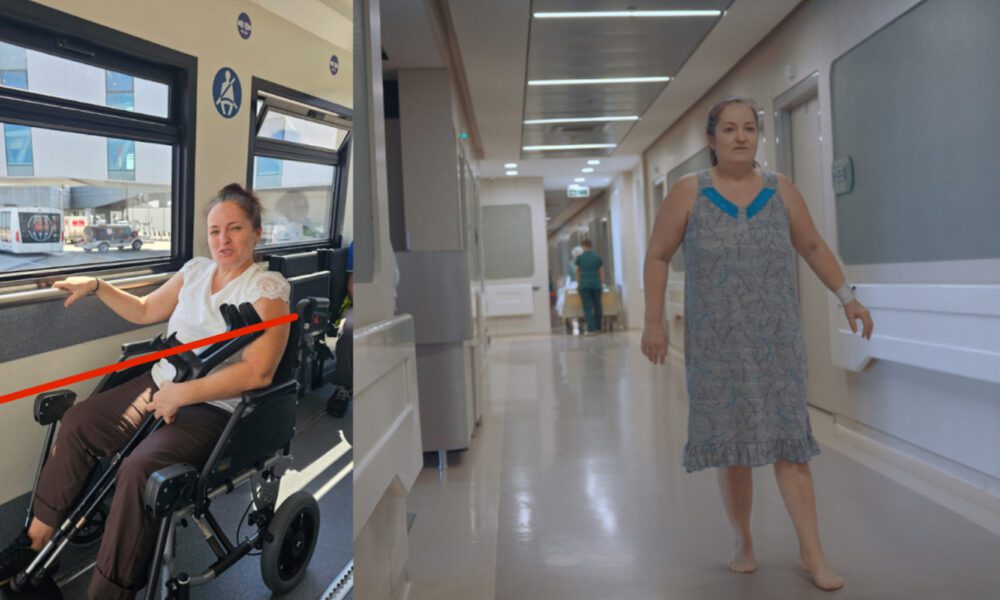Technological innovation has become an integral part of every industry transformation, including healthcare business and operations. Innovations like wearable technology, virtual reality, and the Internet of Things (IoT) are helping healthcare professionals ensure improved patient wellbeing and care. The new healthcare era is benefiting patients by helping them make mindful healthcare choices.
The pandemic era and evolving patient expectations have been the prime factors in making digital transformation a strategic imperative in healthcare. A recent report reveals that digital transformation in healthcare is projected to reach USD 1183.2 billion by 2030, growing at a CAGR of 32.4% from 2024 to 2032.
In this post, we will throw light on the top technologies fueling digital transformation in the healthcare domain, enabling improved patient-centric care.
The Era of Patient-Centric, Data-Driven Care
Digitization and AI bring in volumes of data that are being used to enhance healthcare delivery and outcomes while prioritizing patient needs. This shift is not merely a trend; it is revolutionizing the entire industry while emphasizing personalized care driven by in-depth data analysis.
Technologies like AI and IoT allow healthcare organizations to sift through vast datasets and derive actionable insights. Thus, they can develop diagnostic and treatment plans that are uniquely tailored to each patient’s needs.
Digital transformation is reshaping patient care, offering personalized, efficient, and accessible healthcare solutions. IoT healthcare solutions, AI-driven insights, cloud computing, data analytics, telemedicine, and wearable devices are among a few innovations that are improving patient outcomes and enhancing the experience.
For instance, AI and advanced analytics help healthcare providers understand upcoming trends, flag anomalies, and predict disease progression. This supports pre-emptive care, allowing early intervention and better chronic disease management.
A recent McKinsey report confirms that digital transformation is a top investment priority for nearly 90% of health system executives. Several healthcare organizations are investing in custom healthtech software development solutions to craft impactful experiences for patients and providers and navigate the complexities of healthcare tech. These solutions seamlessly adapt to existing workflows, help meet the compliance requirements, and achieve clinical goals.
Remote Collaborative Care
Telehealth is just the tip of the iceberg; digitization is ushering in a new era of remote care and virtual collaboration, both essential components of modern healthcare delivery. The telemedicine technology, for instance, has become more advanced, supporting full-spectrum healthcare, from mental healthcare to post-operative check-ins.
Similarly, healthcare professionals can remotely access sensitive data and diagnostic reports while ensuring compliance with HIPAA and other privacy regulations. With a remote access software solution, healthcare professionals can securely connect to systems like EHRs and imaging platforms from any device or location. All this while safeguarding patient data and system integrity.
Thus, digital transformation is playing a pivotal role in streamlining multi-site collaboration, allowing specialists to better contribute to patient care.
AI in Clinical Workflows
AI is helping healthcare providers automate repetitive tasks, allowing them to make quick and informed decisions while streamlining complex processes.
Medication errors, for instance, are one of the top challenges in ensuring patient safety. Amidst mounting medical evidence, clinicians find it tough to quickly find medication insights needed to make safer decisions for patients. In such cases, AI-powered clinical decision support (CDS) systems can help provide curated evidence, sourced from medical papers across the globe. Hence, clinicians find accurate data to support their decisions.
Another area where digitization is improving workflows is medical imaging. AI-driven tools are helping radiologists prioritize the most urgent patient studies, improve uptime, and reduce burnout. This ultimately translates into improved patient care.
Similarly, real-time data analysis and predictive analytics are supporting healthcare operations like discharge patterns to optimize resource utilization.
With increased digital adoption in healthcare, newer use cases continue to evolve, automating workflows and reducing friction and error in clinical and administrative tasks.
Secure Connectivity in Modern Healthcare
Technologies like cloud computing and IoT-enabled medical devices are changing the way healthcare organizations operate. These tools are making data more accessible, systems more scalable, and care more proactive than reactive.
For instance, tech solutions like cloud-hosted electronic health records (EHR) and AI-powered imaging archives are supporting providers in their daily workflows and long-term research initiatives.
The proliferation of IoT-enabled innovations like smart infusion pumps, wearable sensors, and connected ventilators is helping providers monitor data in real time. This level of connectivity is empowering them to make informed health decisions.
However, with the advancement in connectivity comes heightened cybersecurity risks. Healthcare data breach statistics by HIPAA show an upward trend in data breaches in the past 14 years. Security threats are a front-line concern in healthcare. To address these threats, healthcare organizations are adopting zero-trust frameworks and ensuring that all the connected devices are authenticated and monitored.
What’s Slowing Down Digital Transformation in Healthcare?
While digital transformation is taking the healthcare industry by storm, organizations face several challenges that come in the way of progress.
- Legacy IT Infrastructure: Several healthcare organizations still rely on legacy, outdated systems that do not integrate seamlessly with modern platforms. In such cases, making upgrades can be expensive and time-consuming.
- Data Silos: Fragmented data across multiple departments impedes interoperability. This limits the effectiveness of analytics and slows clinical workflows.
- Fear of Cybersecurity Threats: As discussed earlier, the growing adoption of connected devices increases the risk of data breaches. Safeguarding sensitive patient data demands additional investment in advanced cybersecurity tools and staff training.
- Compliance Issues: Navigating the complexities of healthcare regulations like HIPAA, GDPR, and other regional laws can be tricky. This can delay deployment and increase legal risks.
Overcoming such barriers is central to letting digital transformation change healthcare for good. This demands a strategic and phased approach with cross-functional collaboration.
What Lies Ahead: An Intelligent and Accessible Healthcare Environment
As digital transformation continues to make its way into healthcare, the industry can expect greater innovation, grounded in intelligence, equity, and accessibility. Technologies like digital twins, ambient clinical intelligence, and generative AI are reshaping healthcare.
Going forward, advanced analytics (the use of sophisticated analytical techniques and tools to unearth insights) will be central to public health and population management. It will help providers forecast outbreaks, allocate resources, and reduce disparities in underserved communities.
Predictive analytics, for instance, can use machine learning algorithms to foresee patient outcomes. By analyzing datasets, ML algorithms can identify abnormal patterns and predict outcomes accurately.
Finally, a new era of co-developed solutions tailored to local needs is emerging with health systems, startups, and tech innovators collaborating to improve the quality of care delivered to patients. This marks a shift from reactive to proactive healthcare, where personalization and real-time care will become the new standard.
Summing Up
Digital transformation has the potential to revolutionize how healthcare is delivered and how clinicians access information or perform administrative tasks. The partnership between these technologies and the provider’s experience and expertise will change healthcare delivery for good.
Prioritizing digital investments can offer health systems opportunities to address the challenges they face. Healthcare systems that aim to succeed in this disruptive environment must invest in areas with the greatest potential impact. For instance, to start with, they can upgrade legacy infrastructure.
Delivering digital value in healthcare demands investment. We are sure the information shared in this post will help you build an infrastructure that will shape the next generation of intelligent healthcare.












Leave a Reply